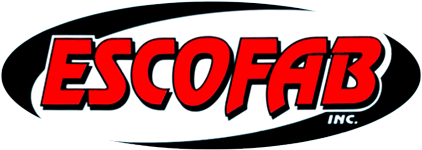Metal fabrication is the process of creating metal structures by cutting, bending, and welding pieces of metal. There are many different types of metal fabrication, each with its own set of specialized techniques. So, how can metal fabrication differ? This article will discuss the six most common types of metal fabrication: cutting, welding, metal stamping, forging, extrusion, and casting.
What Are the Different Types of Metal Fabrication?
Extrusion
Extrusion is a process where metal is forced through a die of the desired cross-sectional shape. The die shapes the metal into the desired profile. Extrusion can be performed with hot or cold metals. Hot extrusion is used for softer metals, like aluminum, that can be easily formed at high temperatures. Cold extrusion is used for harder metals, like steel, that require high pressures to be formed.
Extrusion is used to create objects with a constant cross-sectional shape, such as pipes, tubing, and rods. It can also be used to create hollow objects, such as tubes. Extrusion is a continuous process, meaning that it can produce long lengths of metal without having to stop and start again.
Cutting
Cutting is a process where metal is cut into pieces using saws, shears, or lasers. Cutting can be performed with hot or cold metals. Hot cutting is used for softer metals, like aluminum, that can be easily cut at high temperatures. Cold cutting is used for harder metals, like steel, that require high pressures to be cut.
Cutting is used to create objects with a specific shape or size. It can also be used to cut metal into smaller pieces for use in other processes, such as welding or stamping. Cutting is a discontinuous process, meaning that it must stop and start again after each cut is made.
Casting
Casting is a process where metal is heated until it becomes liquid and then poured into a mold. The metal takes the shape of the mold as it cools and solidifies. Casting can be performed with both ferrous and non-ferrous metals.
Casting is a popular manufacturing process because it can create complex shapes that would be difficult to produce with other methods. It is also a relatively inexpensive process. However, casting has some drawbacks. The most significant drawback is that it can only be used to create objects with hollow interiors.
Welding
Welding is a fabrication process where two pieces of material are joined together by melting and fusing their edges. In other words, it’s the process of coalescing materials to create a new object. The most common type of welding is arc welding, which uses an electric arc to generate heat. This method is often used in the automotive and construction industries because it is fast and efficient.
There are many different types of welding, each with its own set of benefits and drawbacks. The most popular welding methods are:
- Gas metal arc welding
- Shielded metal arc welding
- Flux-cored arc welding
- Gas tungsten arc welding
- Plasma cutting
Metal Stamping
Metal stamping is a process where a die is used to shape or cut metal into the desired shape. This process can be performed on various types of materials, including aluminum, brass, cold rolled steel, stainless steel, and even plastic. The most common type of metal stamping is called “die cutting” — this is when a die is used to cut out a specific shape from a sheet of metal.
Metal stamping can be performed by using various types of machines, including presses, dies, and punches. The type of machine that is used will depend on the size and complexity of the desired shape.
Forging
Forging is a process where metal is heated and then shaped using hammers or presses. This process can be performed on various types of metals, including aluminum, brass, bronze, iron, and steel. Forging is often used to create objects that are stronger than those made with other fabrication processes.
There are two main types of forging: hot forging and cold forging. Hot forging is performed by heating the metal until it is malleable and then shaping it with hammers or presses. Cold forging is performed at room temperature — this process is often used to create small objects with high precision.
Conclusion
There are many different types of metal fabrication processes, each with its own set of benefits and drawbacks. The most popular methods are cutting, casting, welding, stamping, and forging. The best method for fabricating metal will depend on the desired shape, size, and strength of the object. Contact Escofab Inc. for professional metal fabrication services.
